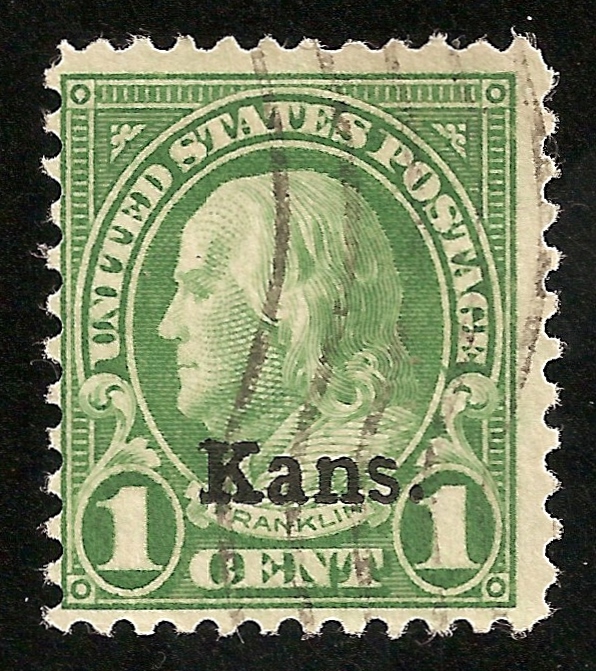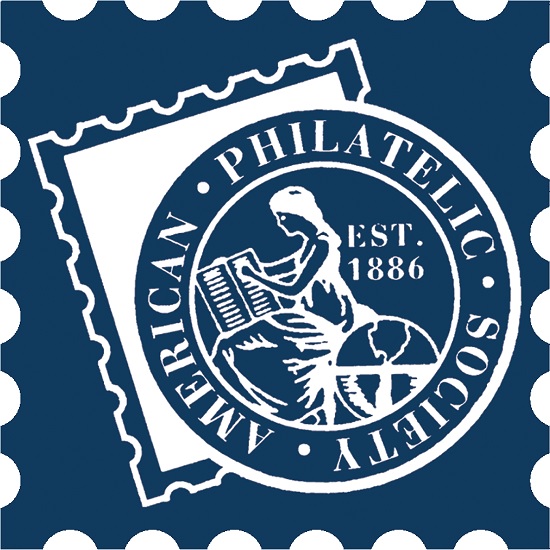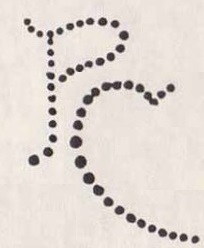Riverside Stamps

Return to Home Page or Altered and Faked stamps Index Page
|
The contents of
this website is copyright protected. Any suggestions for additions or changes are always welcome. |
Suspect Scott #658 Used Single.

This is a suspect #658 "Kans." overprint used single that I found in an auction lot that I bought some time ago. I've been trying to formulate a systematic procedure for determining if a suspect overprinted stamp is genuine or not. I've determined that there are four areas to look at that at a minimum will determine if a suspect overprinted stamp is genuine or not whether it's used or unused. A problem with any of the following five steps would be grounds to say that a suspect overprinted stamp is a fake.
- Check the perforations: Genuine overprints were only applied to the perf 11X10 1/2 issues. You'd be surprised how many fakes I've seen on perf 11X11 or 10X10 stamps.
- Check the gum breakers: Without exception all genuine unused Nebr./Kans. overprints have gum breakers that are spaced 22mm (Type II) apart which means that there will only be one gum breaker on the back unless the breakers are at the very top and very bottom perforations of the stamp. Any suspect overprint stamp found with more than one gum breaker can be considered a fake.
- Check the suspect overprint against a known genuine overprint. The best way of doing this test is to use imaging software to overlay a slightly transparent image of the suspect overprint on top of the known genuine overprint. with this method the size, spacing and shape of the suspect overprint can be compared directly to the known good overprint.
- Check the back to see if the overprint comes through: Genuine overprints were applied using a surface printing method of electrotype which only leaves ink on the surface of the stamp. a fake done with a typewriter would depress the surface which would leave corresponding bumps on the back of the stamp.
- Check the color of the suspect against the color of a known genuine overprinted stamp: This would be a method of last resort since the color of the suspect may have been altered due to natural causes or the colors of the genuine stamps may not be exact. In most cases a fake will be found long before the need to check the color.
What is the perforation gauge of the two sides?
- The suspect gauges out to the correct 11 X 10 1/2.
Are any gum breakers present?
- Yes, there are signs of more than two gum breakers which means the suspect has Type I (5mm spaced) gum breakers.
There’s no need to go further with the analysis, only Type II (22mm spaced) gum breakers are found on genuine overprinted stamps. I can't find any evidence of indentations on the front or bumps on the back that indicate the overprint was applied using a typewriter.
Conclusion: In my opinion the suspect is a #632 with a fake overprint.
As always comments and suggestions are always welcome.
To Contact Riverside Stamps:
Email:
Mike Girard - Owner / Operator / Web Master:
g1rardmn1099@comcast.net
|
I am a member of the American Philatelic Society
|
I am a member of the United States Stamp Society  USSS #: 16733 Visit the United States Stamp Society Website at www.usstamps.org |
I am a member of the Perfins Club
|

